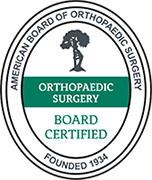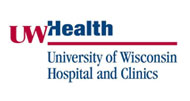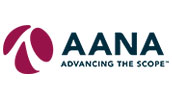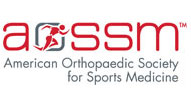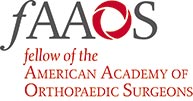Hip Post-operative Instructions
Pain Medications:
A prescription for pain medication (usually a mild-moderate narcotic) will be sent to your pharmacy or provided to you day of surgery, usually along with an NSAID. Per practice policy, narcotic refills are not allowed to be given over the phone on weekends or after office hours.
Nausea/Vomiting:
The anesthetic drugs used during your surgery may cause nausea for the first 24 hours. A medicine has been prescribed for this. If you do not have nausea or vomiting, you do not need to have this prescription filled. If nausea is encountered, drink only clear liquids (i.e. Sprite or 7-up). The only solids should be dry crackers or toast. If nausea and vomiting become severe or the patient shows sign of dehydration (lack of urination) please call the doctor or Castle Orthopaedics.
Diet and Comfort:
Return to your regular diet as tolerated. Begin with light or bland foods. Drink plenty of fluids.
Home Medications:
Resume medications you were taking prior to surgery unless you have been told to discontinue them. If you smoke (or have smoked within the last year), we strongly recommend that you do not smoke.
Activity:
The nurses in the recovery room will advise you on your specific weight-bearing status. These guidelines should be strictly followed in order to appropriately protect the surgical site. Typically, a set of crutches or a walker will be dispensed to accommodate these restrictions and improve your mobility, which is important in preventing complications, such as a blood clot. The nursing staff will ensure that you are safe to go home with the appropriate instructions on ambulation and crutch/walker use. Extremity elevation for the first 72 hours is also encouraged to minimize swelling.
Ice:
Ice, similar to elevation, helps to control post-op swelling and reduce pain. Frozen bags of peas, commercially- available cold packs, or ice placed into an air-sealed bag are effective ways to cool your hip. Icing should be performed as often as possible or at least for 20-minute periods 3-4 times per day. Ice should not be applied directly on the skin.
Dressing Care:
If oozing from surgery site occurs, and the dressing appears soaked with bloody fluid, please change the dressing as needed. This normally occurs after fluid irrigation during surgery and will resolve within 24-36 hours. You may remove the dressing on post-op day #3. Apply Band-Aids to wound sites and change them once a day. Keep the wound clean and dry. Please do not use bacitracin or other ointments under the bandage. Showering is allowed on post-op day #4 if the wound is dry. MAKE SURE EACH INCISION IS COVERED WITH A WATERPROOF BANDAID DURING SHOWER ONLY! All dressings should be kept clean and dry. If for any reason your dressing becomes wet or excessively bloody or feel that it is too tight, please contact our office to discuss and we can get you into clinic sooner for a new dressing if needed.
Do not soak the hip in water in a bathtub or pool until the sutures are removed. Typically getting into a bath or pool is permitted 2 days after suture removal unless otherwise instructed by Dr. Akoh. Please call if any questions.
Physical Therapy:
The first physical therapy visit should be scheduled within 3 days. If you surgery was Friday, Monday is appropriate for your first appointment.
Blood Clot Prevention:
- If ok by your primary care doctor, we generally advise taking an enteric-coated aspirin 325 mg daily during the first 2 weeks following surgery. Akoh will discuss this individually with each patient in regards to exact dosage recommended. If you were already taking blood thinners (anti-platelet or anti-coagulant) before surgery, then these medications will be restarted when appropriate post-operatively. If you have a history of prior blood clot or significant risk factors, then Dr. Akoh may decide to prescribe Lovenox or other agent for prophylaxis.
- If you smoke, stop smoking! Smoking makes blood clot formation more likely, impedes bone and soft tissue healing, and increases your infection
- Keep your leg elevated at least to the level of your heart for the first 48
- Try to change position every 2 hours or
- Do not cross
- Work on range of motion exercises every 30 minutes while awake, including at the hip and knee (above where your surgery was).
- If you are riding in a car for a prolonged period, take a break every hour to get out and move around (with use of crutches/walker as directed).
- Report any of the following signs/symptoms to our office:
- Pain, redness, or swelling in the leg/calf
- Sharp, stabbing pain in your side, back, or chest
- Shortness of breath
- Fever > 101.4 F or chills/sweats
- Bloody mucus with cough
- Severe headache
Infection:
Infection is uncommon, especially during the first week after surgery. A low-grade fever (temperature < 101.4 F) is very common following surgery and is not a sign of infection. Infection is typically characterized by streaking redness up the leg, a foul smell from the operative area, excessive drainage, and high fevers (> 101.4 F). If any of these events occur, please contact our office immediately.
Driving After Surgery:
The ability for someone to resume driving after surgery is seldom a medical question, but usually a legal question. It is the responsibility of all licensed drivers to drive safely at all times, no matter what their permanent or temporary impairment may be. Reaction time following surgery may be compromised, secondary to medication and/or pain.
The ability to fully use all extremities may be impaired after surgery, especially if surgery involved your right hip. Driving should not be performed while on narcotics. Driving a manual car may take up to 3-4 weeks.
MEDICATIONS
Heterotopic Bone Formation Prevention:
- Naprosyn 500mg, 1 tablet by mouth every 12 hours,
- *Take 1st dose on the evening of surgery*
- Prilosec (Stomach Prophylaxis) 20mg, 1 tablet by mouth daily (take on an empty stomach
- 1 hour before breakfast for 14 days only)
Pain Medication:
- Norco 1 to 2 tablets by mouth every 3-4 hours as
- Local anesthetics (i.e. lidocaine) are put into the incision after It is not uncommon for patients to encounter more pain on the first or second day after surgery. This is the time when swelling peaks. Taking pain medication before bedtime will assist in sleeping. It is important not to drink or drive while taking narcotic medication. You should resume your normal medications for other conditions the day after surgery.
Blood Clot Prevention;
- Aspirin 325mg by mouth daily for 2 weeks
- You will take aspirin (325 mg) daily until the sutures are removed in the This may lower the risk of a blood clot developing after surgery. Should severe calf pain occur or significant swelling of calf and ankle, please call the doctor.
Anti-Nausea (if applicable): Zofran 4 mg, 1 by mouth every 6 hours as needed. You will be given a prescription, but it is optional to fill it.
Anti-Spasm (if applicable): Zanaflex 4mg, 2 tablets by mouth every 6 hours as needed.
Follow-Up Instructions:
- Follow up in clinic with your surgeon as scheduled. If your appointment has not already been made at the time of discharge, you will need to call to make the appointment in 10-14
- The general scheduling number is .
- Contact your physician's office during office hours or the Rush Copley operator at all other times at . The orthopedic staff on-call can be reached through this method if a medical emergency
When to Call the Office?
Do not hesitate to contact our office if any concerns arise. We make every effort to return phone calls in a timely manner. During normal business hours please call the office at . If after hours, please use the same number, but your call will be routed to one of the physicians on call for our group
Important Contact Information
Starlyn Nadeau, RN, BSN (option 3, then option 1) Fax Number: 630-862-3085
After Hours: (follow the prompts to the emergency line)

